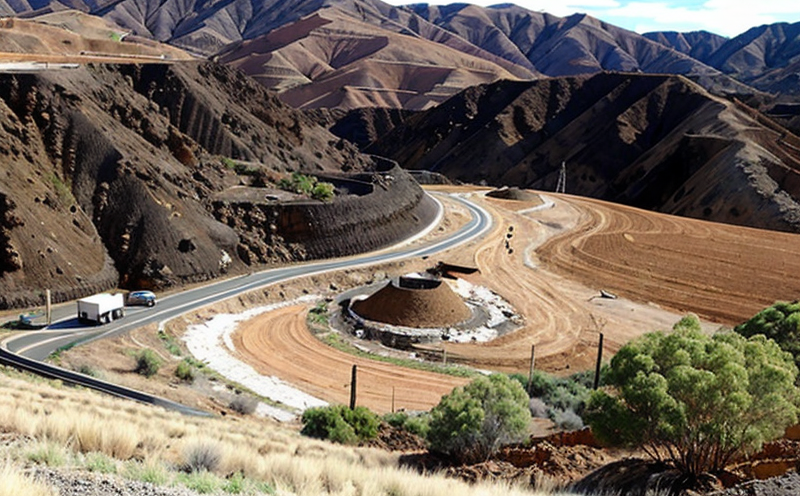EPA 1311 Toxicity Characteristic Leaching Procedure on Restored Soils
The EPA 1311 procedure is a critical tool for assessing the toxicity of leachate that may result from landfills, hazardous waste management units, and other contaminated sites. In the context of mine rehabilitation and land restoration, this test is essential to ensure that soil amendments and treatments do not pose risks after site reclamation.
The objective of EPA 1311 is to determine if a material being used in a landfill or waste management unit could leach hazardous constituents under conditions that simulate those found at the waste disposal site. This test helps regulatory bodies, such as the Environmental Protection Agency (EPA), evaluate whether materials are hazardous and must be managed according to RCRA (Resource Conservation and Recovery Act) regulations.
For mine rehabilitation projects, the EPA 1311 test is used to ensure that amendments added to contaminated soils do not pose a risk of leaching contaminants into the surrounding environment. This procedure can help determine if the soil meets the criteria for land reuse or if further treatment is required. The test involves subjecting the amended soil to a series of leaching cycles, followed by analysis of the leachate for hazardous constituents.
The procedure requires careful preparation and handling of samples, including the use of appropriate containers and leachate collection devices. The specimen must be prepared in accordance with EPA 1311 standards before being subjected to the leaching process. This involves placing a known quantity of soil into a predetermined volume container filled with deionized water.
The specimens are then exposed to a series of leaching cycles, each designed to simulate different environmental conditions such as rainfall or groundwater flow. After each cycle, the leachate is collected and analyzed for hazardous constituents using analytical methods specified in EPA 1311.
Acceptance criteria specify that if the concentration of any regulated constituent in the leachate exceeds the established threshold levels, the material is considered hazardous under RCRA. This information can then be used to guide decisions about further treatment or additional remediation measures.
Competitive Advantage and Market Impact
- EPA 1311 compliance ensures that your mine rehabilitation projects meet the highest environmental standards, providing a clear competitive edge in an increasingly environmentally conscious market.
- Our expertise in this procedure allows us to provide accurate and reliable data, which can be used to justify decisions about soil reuse or further treatment. This is particularly valuable when dealing with contaminated sites where land reuse may not otherwise be possible.
- We offer comprehensive support for your R&D teams, helping them develop effective strategies for mine rehabilitation that meet both regulatory requirements and environmental goals. Our service can help reduce the risk of non-compliance penalties and improve overall project success rates.
Industry Applications
The EPA 1311 procedure is widely used in various sectors, including mining, waste management, and environmental remediation. In the context of mine rehabilitation, this test plays a crucial role in ensuring that soil amendments do not pose risks to human health or the environment.
Our laboratory services are tailored specifically for quality managers, compliance officers, R&D engineers, and procurement professionals who need reliable data to make informed decisions about their projects. By providing accurate results from EPA 1311 testing, we help these stakeholders ensure that their mine rehabilitation efforts comply with regulatory requirements.
Our expertise in this procedure allows us to provide accurate and reliable data, which can be used to justify decisions about soil reuse or further treatment. This is particularly valuable when dealing with contaminated sites where land reuse may not otherwise be possible. Our services are designed to support your R&D teams, helping them develop effective strategies for mine rehabilitation that meet both regulatory requirements and environmental goals.
International Acceptance and Recognition
The EPA 1311 procedure is recognized globally as a standard method for assessing the toxicity of leachate from landfills, hazardous waste management units, and other contaminated sites. This test is widely accepted in various countries around the world, including those with their own national regulations.
Our laboratory follows international standards such as ISO, ASTM, EN, IEC, etc., ensuring that our results are valid and reliable for use in any jurisdiction. By providing accurate data from EPA 1311 testing, we help ensure compliance with local and international regulations.
The procedure is used by quality managers, compliance officers, R&D engineers, and procurement professionals who need reliable data to make informed decisions about their projects. Our expertise in this procedure allows us to provide accurate and reliable data, which can be used to justify decisions about soil reuse or further treatment. This is particularly valuable when dealing with contaminated sites where land reuse may not otherwise be possible.





